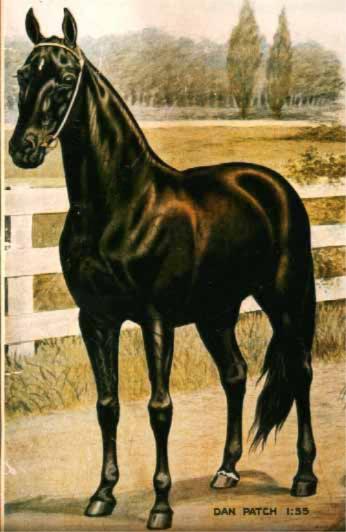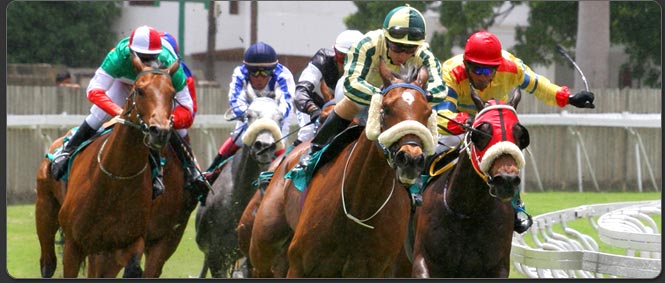Just this past weekend another notable death hits the racing World.
Alysheba, '87 Kentucky Derby and Preakness winner, and '88 horse of the year, unfortunately was euthanized at the age of twenty-five.
In his stall and honored spot in Kentucky Horse Park's Hall of Champion, the beautiful, old stallion fell, injuring his right hind femur.
"Kathy Hopkins, director of equine operations at the horse park, said Alysheba fell due to a chronic degenerative spinal condition." (
ESPN.com)
The article goes on to say that because of his age, Alysheba was in a lot of pain, so much that the stallion was unable to stand without support. With his pain and pride in mind, the team decided to allow the Champion proper rest.
Through his racing years Alysheba proved to be amazing. He always fought for what he wanted...and he always wanted to win. Alysheba was in the money (1st, 2nd, 3rd) for 81% of his twenty-six starts, earning $6,679,242. Winning eleven of those starts, Alysheba earned a plethora of awards such as top three year old in '87 and Horse of the Year in '88.
In 1987 Alysheba would make an amazing attempt at the Triple Crown. His Kentucky Derby was one of the most amazing shows of heart I have ever witnessed. When the field turned for the stretch, Alysheba was not really in the mix for the win, but he started to make a strong move toward the lead horse Bet Twice. As he was getting close to overcoming the leader, he took a bad stumble. As can be seen in this
video, it can be seen that Alysheba was nearly knocked down as he clipped heals with Bet Twice. Luckily for him and all the other horses in the race, Alysheba remarkably recovered. Not only did he get back up, but he was barely bothered by the fall. He got up, turned his head past bet twice and plowed forward to win.
"Falling didn't even go through my mind," McCarron said. "I kept thinking there's only one horse left in front of us that was going to prevent us from getting the roses. He just did an incredible job of righting himself. I was focused on keeping my balance and trying to stay on his back."
Says Alysheba's jockey Chris McCarron as he remembers his magnificent partner.
Alysheba would then go on to win the Preakness as well. Unfortunately for Alysheba, he would take a loss in the Belmont to his rival Bet Twice. Alysheba and Bet Twice would continue to meet over the next year, and the two traded blows with wins and loses. But with wins in other races against other amazing horses, Alysheba came out on top of the rivalry.
As a four year old Alysheba only improved, although continuing his close race trend. It must have been a love for the horse to keep things close, and although he occasionally lost in his photo finishes, he desire to stick he nose in front usually prevailed. Although he lost the Breeder's Cup Classic in 1987, he would come back to win the Classic in 1988. With this win he earned himself the Best Older Horse award and the coveted Horse of the Year.
After his racing career he did what all Champions did, went to a life in the breeding shed. But that can only last so long. Eventually the old man was retired from that as well and was donated to Kentucky Horse Park to live out his days in the Hall of Champion. That is just what he did. He was happy and well taken care of, and allowed the public to get close to such an amazing creature.
With all his talent he was listed 42nd on Blood Horse's list of hundred top horses in the 2oth century. The boy truly deserved it.
I was truly shocked when I heard the news. Although never actually seeing Alysheba run, I have heard his name dropped countless times as they try to give the public some idea of a horse's talent. I'm glad that I got this opportunity to learn more about this amazing stallion, I just wish I had not waited so long to learn about him.
What really depresses me about Alysheba's death, besides losing a legend, is I was going to travel to Kentucky Horse Park again this summer. I would have been able to see this amazing horse with my own eyes, and hear first hand about his greatness. Unfortunately I will never be able to do that, but I still respect his ability.
Because of Alysheba I feel a more motivated to learn about all the great race horse's out there.
Thank you Alysheba. Your memory will live on.

 Back to what I should be talking about...I am again taking another look at Blood Horse's list of the top 100 horses in the 20th Century. This time around I decided on a horse I have heard countless times, but really don't know much if anything about. That is how I chose number 26: Whirlaway.
Back to what I should be talking about...I am again taking another look at Blood Horse's list of the top 100 horses in the 20th Century. This time around I decided on a horse I have heard countless times, but really don't know much if anything about. That is how I chose number 26: Whirlaway.


 Silks are very useful and an important part of racing. Should you want to give designing them yourself, try this link and
Silks are very useful and an important part of racing. Should you want to give designing them yourself, try this link and 

 Opening the infield to spectators is another special thing about the Derby. Usually the inside of the track is off limits to anyone but track hands, but this one day the infield is opened to the public, and so begins the biggest party since Woodstock. Hundreds of people pack into inside of the track to be loud and get drunk. Those who go to the infield party are rarely there to watch the race, just because it is extremely unlikely to see a horse tail, let alone the winner. So if you are looking for fun, try the infield, otherwise stick to the grandstands.
Opening the infield to spectators is another special thing about the Derby. Usually the inside of the track is off limits to anyone but track hands, but this one day the infield is opened to the public, and so begins the biggest party since Woodstock. Hundreds of people pack into inside of the track to be loud and get drunk. Those who go to the infield party are rarely there to watch the race, just because it is extremely unlikely to see a horse tail, let alone the winner. So if you are looking for fun, try the infield, otherwise stick to the grandstands.









